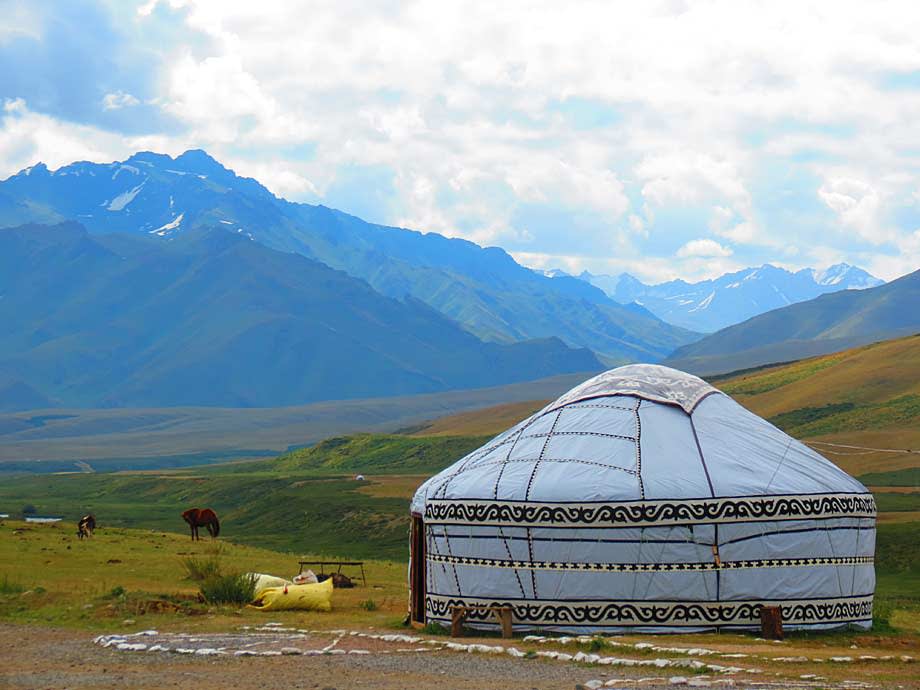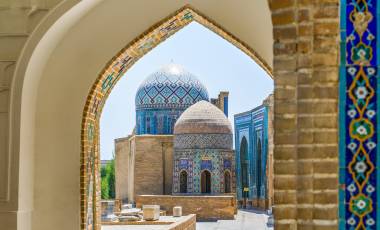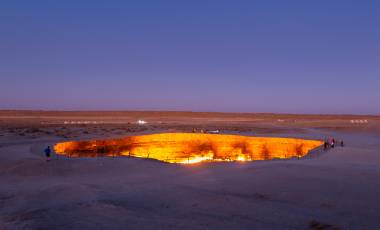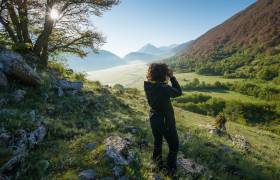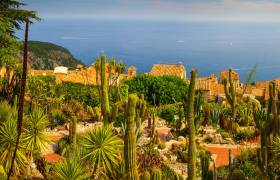Read time – 4 minutes
The Silk Road: Part 2 of 2. Read part 1
Exodus’ Tom Harari takes us on the trail of ancient traders along Asia’s iconic Silk Road.
Travelling the Silk Road
Kashgar is tucked away in a remote corner of China. Flanked by mountains and desert, it is not an easy place to reach but the journey there is undeniably spectacular. Between its geography and the vagrancies of Chinese officialdom, getting there from Osh in Kyrgyzstan is a true adventure.
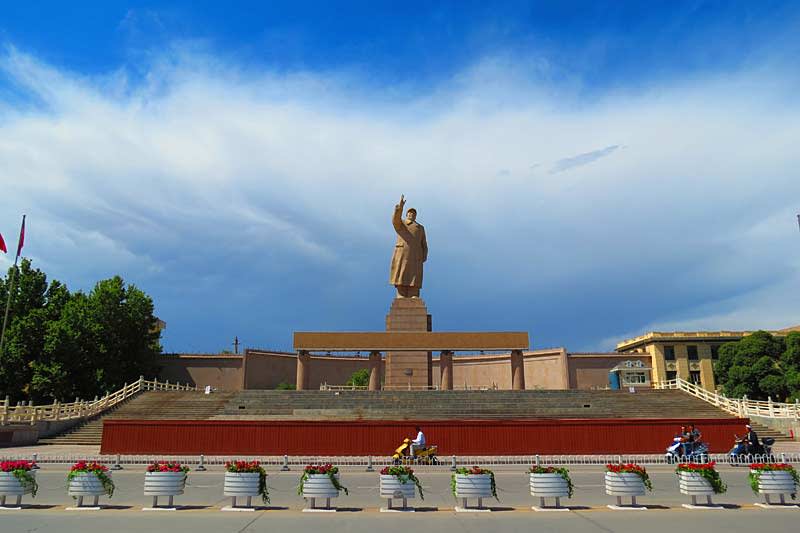 Kashgar
Kashgar Kashgar
Modern Kashgar is not an attractive city. With the arrival of the railway, the city has been flooded with Han Chinese and rampant development means that nondescript cement buildings have been taking over from the old adobe centre. Aesthetics aside, however, it’s a fascinating place. The heart and soul of the city is still there if you look at ground level.
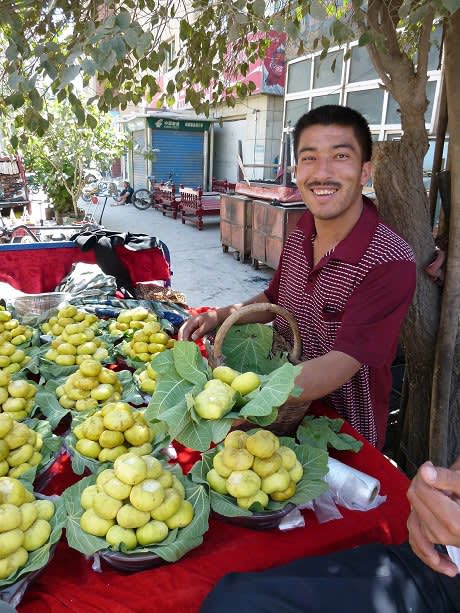 Fig seller, Kashgar
Fig seller, Kashgar Walking through the crafts neighbourhood is just like stepping back in time. Sat on the pavement or in open shops people are making baskets, door-knockers, pots and pans, even horse-shoes. Some vendors sell traditional herbs and other goods used in traditional medicine, bake fresh bread or churn fresh ice-cream.
Traditional tradesmen still work and sell their wares much as they would have done in Marco Polo’s time. Ignoring the surrounding tower blocks, it’s not hard to imagine the city as it once was in its heyday as a great trading town on the mighty Silk Road.
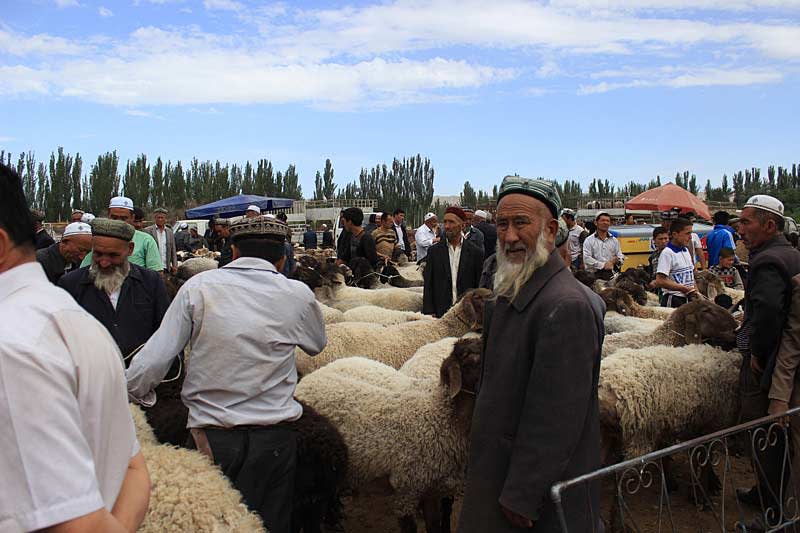 Livestock Market, Kashgar
Livestock Market, Kashgar Silk Road Bazaar
The Sunday Bazaar has taken place here for centuries. These days the market has been split in two. On the outskirts of town is the livestock market, a buzzing throng of sheep, donkeys, cows, horses and even the odd camel, as men and women haggle and negotiate, making deals over the animals.
Whether it’s seeing a man pulling a sheep out of the back-seat of a car, watching a young boy minding sheep or observing business being made over sheep (there’s a lot of sheep), it’s a wonderful place for people watching. The second part of the Bazaar is back in town, spread over a large covered area, everything is for sale from skull-caps to live scorpions, plastic buckets to umbrellas. This is everyday life and, to me, is a delight to wander through.
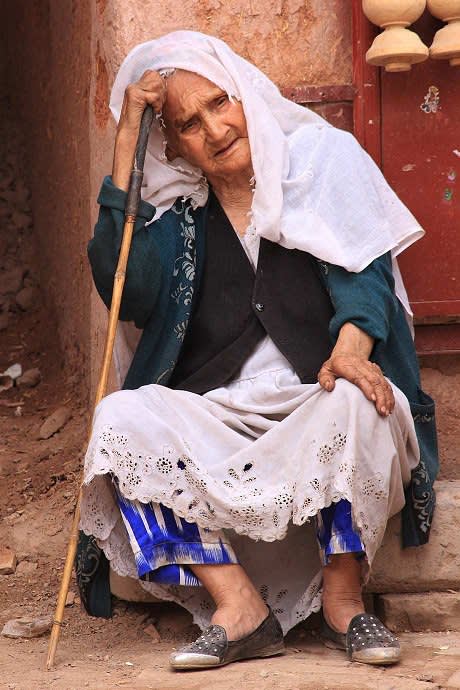 Lady in Kashgar
Lady in Kashgar Kashgar is not Samarkand or Bukhara. Whilst there are a couple of big monuments, its true value is in the detail: thousands of electric scooters, sheep escaping and running in the middle of a busy road, the mix of Uyghur, Han, Tajik, Pashtun, or even, as happened during our free afternoon on Sunday, experiencing a massive sandstorm envelope the city.
Kyrgyzstan
After two days in Kashgar, it was time to return to Kyrgyzstan. Another very long day that promises vistas even grander than the ones on the way over as we cross over the Torugart Pass, itself possibly an even more remote border crossing than the Irkeshtam Pass.
Sadly, the sandstorm that enveloped Kashgar spread over the mountain and the views are not to be seen as a dull haze of dust limit visibility to a few hundred meters.
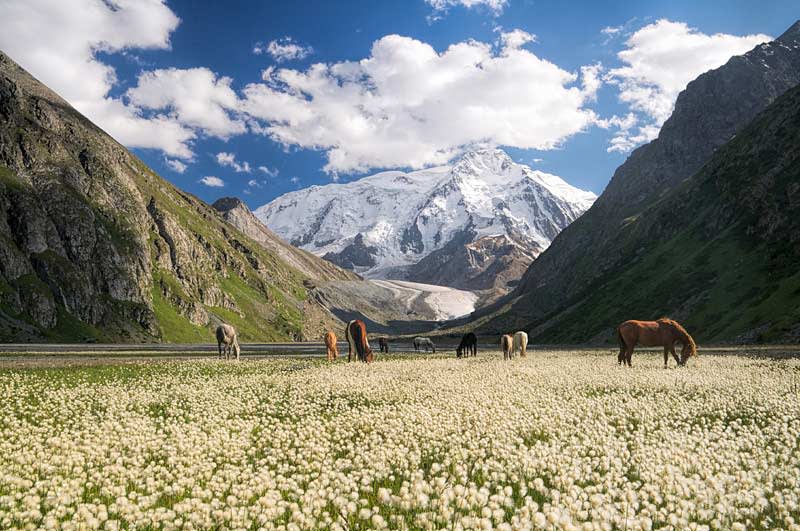 Horses and yurts in the Tien Shan Mountains
Horses and yurts in the Tien Shan Mountains Kyrgyzstan was off limits to foreigners during the Soviet era and was used as a buffer with China; today, however, you don’t even need a visa to enter.
Whilst Uzbekistan offered grand architecture and Kashgar was in the detail, Kyrgyzstan’s big draw is the natural beauty and rural lifestyle. There are still nomads here, their yurts and horses scatted along the landscape as we drive first to Naryn then towards, and around, Issyk Kul Lake.
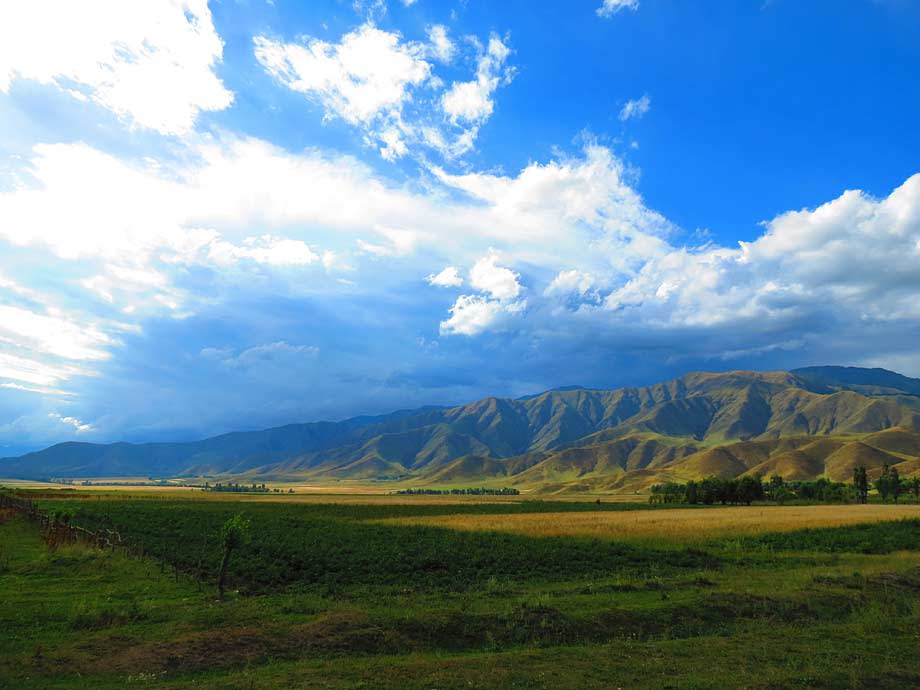 Issyk Kul Lake region
Issyk Kul Lake region Karakol
As we journey through the Tien Shan, the Mountains of Heaven, we visit a Women’s Association for a homemade lunch and buy traditional felt rugs which the Kyrgyz decorate their yurts with. We visit the home of a traditional eagle hunter and hike through the beautiful Djety Oguz valley.
Arriving at the resort town of Karakol on the end of Issyk Kul Lake, the diversity of this small nation becomes clear as we visit a Russian Orthodox Church and a Dungan Mosque with its distinctive Buddhist iconography.
The Dugan are a small minority who are descendants of Chinese women and Arab traders and fled China for Central Asia. We even get to sample a home-cooked dinner in the home of a local Dugan family.
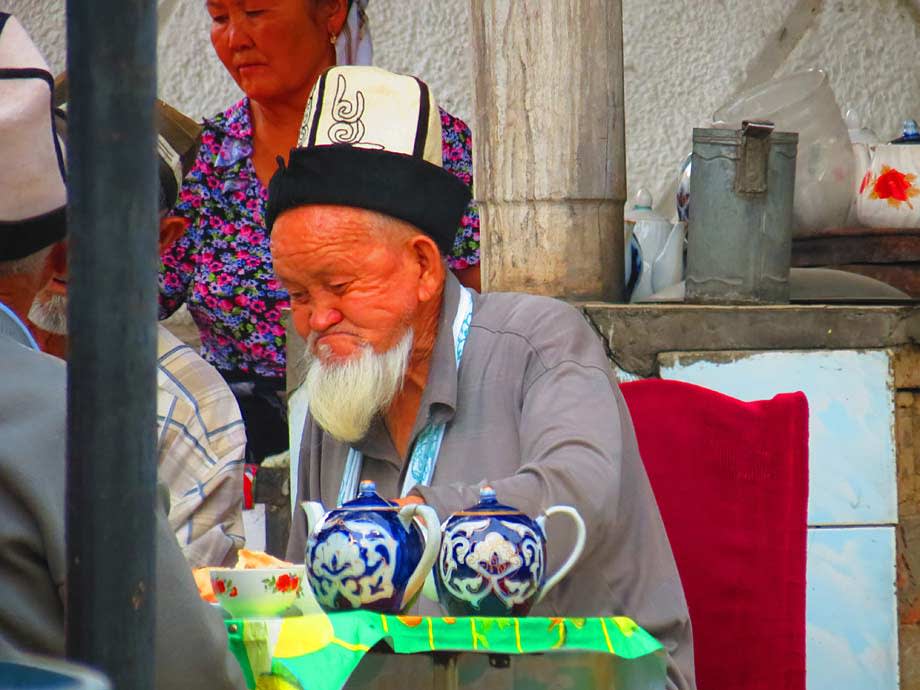 Kyrgyz man
Kyrgyz man We continue around the lake taking in Przhevalsk Museum, ancient burial mounds and a field of petroglyphs showing a history much older than that of the Silk Road.
Our penultimate stop is the resort of Cholpon Ata where Russians, Kazakhs and Kyrgyz descend in the summer – marking an odd contrast to the country’s pastoral life.
Bishkek
Eventually, our Silk Road journey takes us to Bishkek, Kyrgyzstan’s capital city. Whilst it certainly feels like a Russian city, it’s a far cry from the Soviet-looking Tashkent where our journey started.
A journey which has taken us through space and time, to stunning cities and through spectacular landscapes, and unveiled a story of conquerors, traders, academics and craftsmen, whose impact on the history of the world has become undeniable to us.
Want to see it for yourself? See our trips along the Silk Road below.

